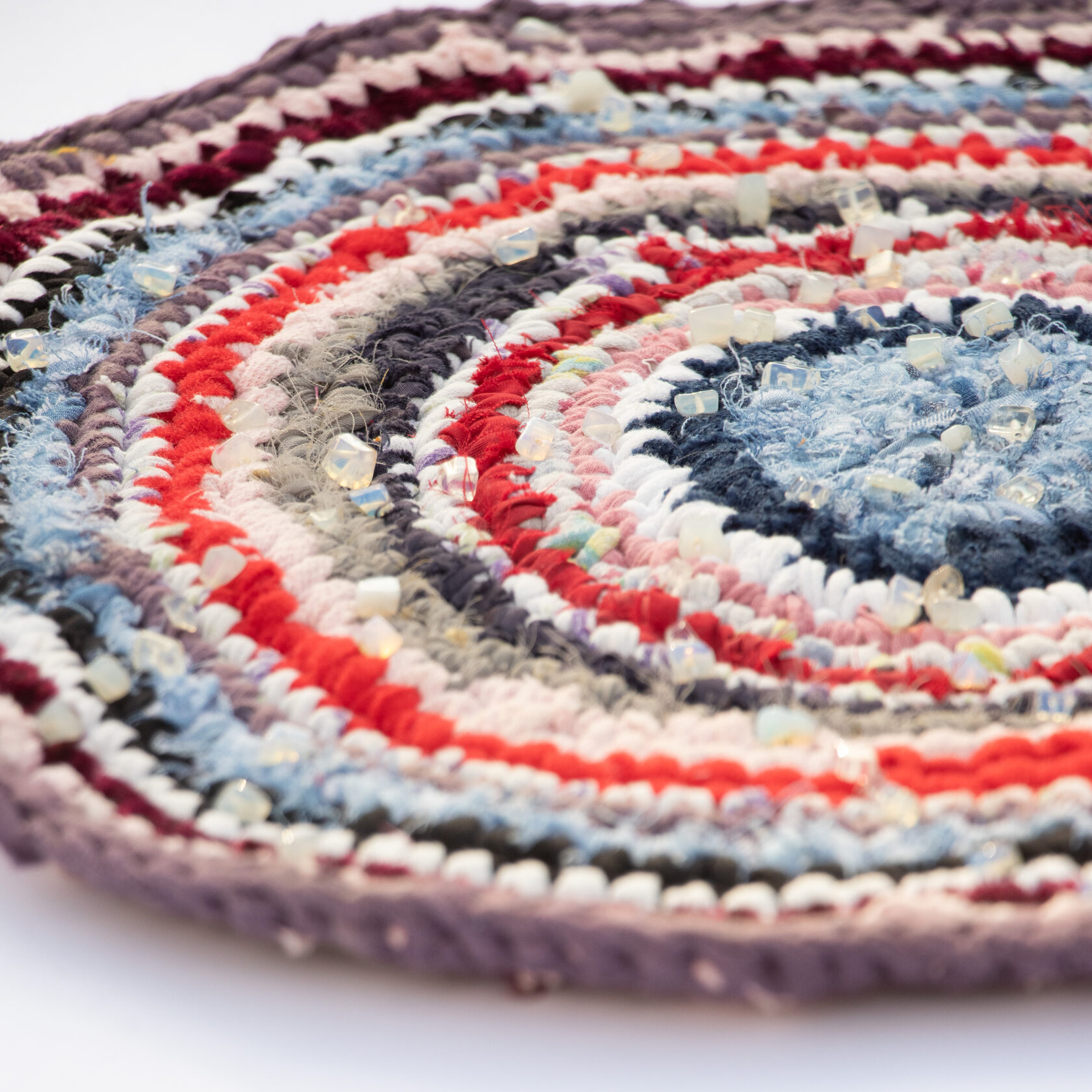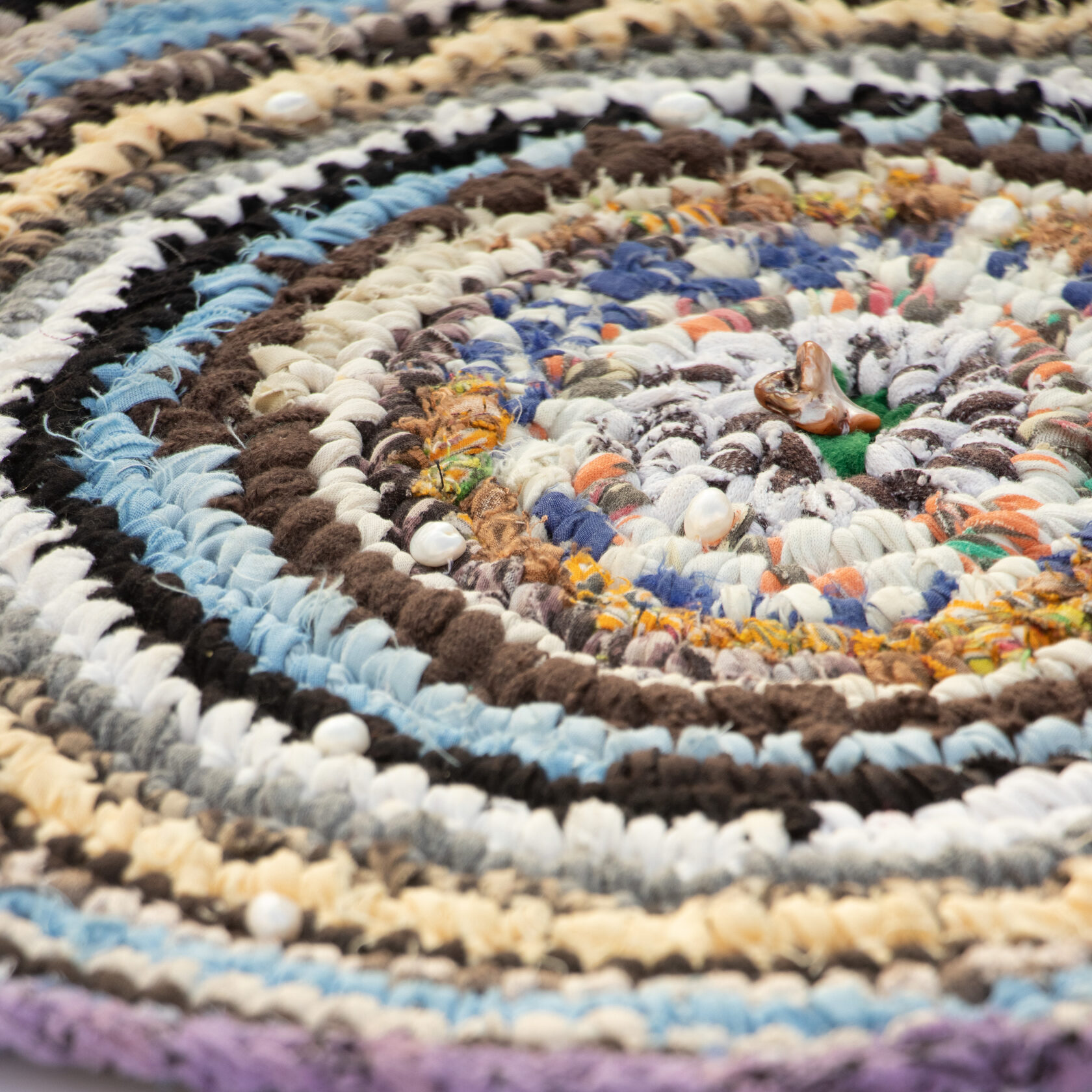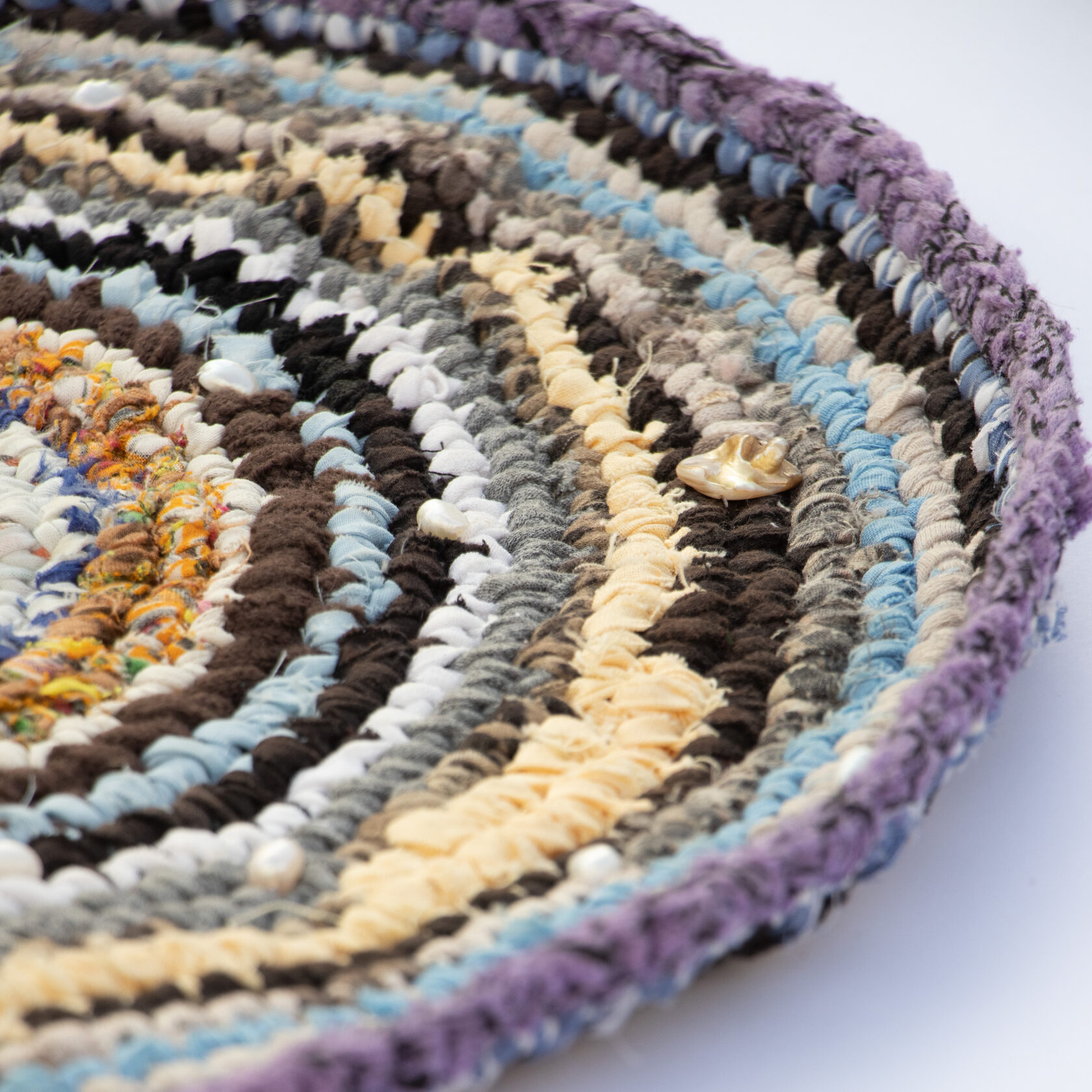Apă
Every Friday evening a biology teacher Elena comes to the river bank to feed the fish with cookies. It was like this for many years, until one day she came across a round, elongated object wrapped in a fishing net.
The object was shimmering in different colors. Putting an ear to it one could hear a faint sound from inside this treasure as if someone was tapping a spoon on the bark of a tree. For all its merits the object was completely useless. The woman even tried to sell it at a flea market but the buyers only examined and listened it carefully. It was gathering dust for a long time in Elena's warm apartment until a turquoise creature hatched out of it.
When Elena was a child her dad loved to narrate her about extinct creatures. Around three hundred million years ago a very special amphibian species - Labyrinthodontia Buccellatum - lived on the banks of the Dniester River that flowing through the Moldova Republic. Neither aquatic nor terrestrial creatures, they were very secretive animals, so few people were pretty lucky to see them. Over time, the number of the species decreased until they completely disappeared.
This particular species Elena encountered. In the early days, the skin tones of the amphibian changed from purple to ginger, one leg turned blue and the toes were gray like sand. Elena examined the body of an amphibian. Inside its belly, she found three bicycle wheels, four rusty boats, and one carpet cracker. As a result, heavy stuff poisoning and fever.
The woman began to take care of him. She taught him to sew, comb, and finish the crumbs after eating. Elena gave the foundling a name – Apă [ah’pə], which means "water" in Moldavian language. Elena believes that we all came out of the water. Nowadays, every Friday they collect trash together on the riverbank and perhaps one day they will find a new egg.
Every Friday evening a biology teacher Elena comes to the river bank to feed the fish with cookies. It was like this for many years, until one day she came across a round, elongated object wrapped in a fishing net.
The object was shimmering in different colors. Putting an ear to it one could hear a faint sound from inside this treasure as if someone was tapping a spoon on the bark of a tree. For all its merits the object was completely useless. The woman even tried to sell it at a flea market but the buyers only examined and listened it carefully. It was gathering dust for a long time in Elena's warm apartment until a turquoise creature hatched out of it.
When Elena was a child her dad loved to narrate her about extinct creatures. Around three hundred million years ago a very special amphibian species - Labyrinthodontia Buccellatum - lived on the banks of the Dniester River that flowing through the Moldova Republic. Neither aquatic nor terrestrial creatures, they were very secretive animals, so few people were pretty lucky to see them. Over time, the number of the species decreased until they completely disappeared.
This particular species Elena encountered. In the early days, the skin tones of the amphibian changed from purple to ginger, one leg turned blue and the toes were gray like sand. Elena examined the body of an amphibian. Inside its belly, she found three bicycle wheels, four rusty boats, and one carpet cracker. As a result, heavy stuff poisoning and fever.
The woman began to take care of him. She taught him to sew, comb, and finish the crumbs after eating. Elena gave the foundling a name – Apă [ah’pə], which means "water" in Moldavian language. Elena believes that we all came out of the water. Nowadays, every Friday they collect trash together on the riverbank and perhaps one day they will find a new egg.
Carolina Dutca and Valentin Sidorenko
15 photographies | 60x50 cm | 2020
Magical water lilies, an amphibian creature, a former scientist looking like a babushka and a crochet rug take place in the heart of a river. This is a setting and the protagonists of the fable told by the duo Dutca-Sidorenko.
In the form of a visual tale, the artists’ duo dedicate their joint work to the Dniester River, which is rises in the Carpathian mountains and flows into the Black Sea. Carolina Dutca, who is from Bender, a small town near the river, wants to evoke various issues related to the river, such as excessive sand exploitation, abandoned ships, floods that erode the water and waste dumps. While researching the history of Transnistria, a Moldavian region bordering Ukraine, the artists discovered that the White Water Lily was an endangered species.
Their meeting with Elena Nikolaevna, a former biology teacher, fascinated by her father’s childhood stories about a vanished amphibian world, encouraged them to recreate a new legend, that of 'Apă'. Together they invent a story, where multicoloured embroidered rugs, extravagant costumes worn by extras, syntetic water lilies, and stranded frogmen are part of a battered and deserted nature. Elena Nikolaevna then becomes the protagonist of her own story with the amphibious creature she has named Apă, “water” in Moldavian. The former biologist collects the waste that pollutes the waters of the river with Apă to make ‘magic’ rugs.
The result is a set of 15 photographs, in which a set of characters and scenes unfold the tradition of popular theatre.
15 photographies | 60x50 cm | 2020
Magical water lilies, an amphibian creature, a former scientist looking like a babushka and a crochet rug take place in the heart of a river. This is a setting and the protagonists of the fable told by the duo Dutca-Sidorenko.
In the form of a visual tale, the artists’ duo dedicate their joint work to the Dniester River, which is rises in the Carpathian mountains and flows into the Black Sea. Carolina Dutca, who is from Bender, a small town near the river, wants to evoke various issues related to the river, such as excessive sand exploitation, abandoned ships, floods that erode the water and waste dumps. While researching the history of Transnistria, a Moldavian region bordering Ukraine, the artists discovered that the White Water Lily was an endangered species.
Their meeting with Elena Nikolaevna, a former biology teacher, fascinated by her father’s childhood stories about a vanished amphibian world, encouraged them to recreate a new legend, that of 'Apă'. Together they invent a story, where multicoloured embroidered rugs, extravagant costumes worn by extras, syntetic water lilies, and stranded frogmen are part of a battered and deserted nature. Elena Nikolaevna then becomes the protagonist of her own story with the amphibious creature she has named Apă, “water” in Moldavian. The former biologist collects the waste that pollutes the waters of the river with Apă to make ‘magic’ rugs.
The result is a set of 15 photographs, in which a set of characters and scenes unfold the tradition of popular theatre.















Carolina Dutca and Valentin Sidorenko
15 photographies | 60x50 cm | 2020
Magical water lilies, an amphibian creature, a former scientist looking like a babushka and a crochet rug take place in the heart of a river. This is a setting and the protagonists of the fable told by the duo Dutca-Sidorenko.
In the form of a visual tale, the artists’ duo dedicate their joint work to the Dniester River, which is rises in the Carpathian mountains and flows into the Black Sea. Carolina Dutca, who is from Bender, a small town near the river, wants to evoke various issues related to the river, such as excessive sand exploitation, abandoned ships, floods that erode the water and waste dumps. While researching the history of Transnistria, a Moldavian region bordering Ukraine, the artists discovered that the White Water Lily was an endangered species.
Their meeting with Elena Nikolaevna, a former biology teacher, fascinated by her father’s childhood stories about a vanished amphibian world, encouraged them to recreate a new legend, that of 'Apă'. Together they invent a story, where multicoloured embroidered rugs, extravagant costumes worn by extras, syntetic water lilies, and stranded frogmen are part of a battered and deserted nature. Elena Nikolaevna then becomes the protagonist of her own story with the amphibious creature she has named Apă, “water” in Moldavian. The former biologist collects the waste that pollutes the waters of the river with Apă to make ‘magic’ rugs.
The result is a set of 15 photographs, in which a set of characters and scenes unfold the tradition of popular theatre.
15 photographies | 60x50 cm | 2020
Magical water lilies, an amphibian creature, a former scientist looking like a babushka and a crochet rug take place in the heart of a river. This is a setting and the protagonists of the fable told by the duo Dutca-Sidorenko.
In the form of a visual tale, the artists’ duo dedicate their joint work to the Dniester River, which is rises in the Carpathian mountains and flows into the Black Sea. Carolina Dutca, who is from Bender, a small town near the river, wants to evoke various issues related to the river, such as excessive sand exploitation, abandoned ships, floods that erode the water and waste dumps. While researching the history of Transnistria, a Moldavian region bordering Ukraine, the artists discovered that the White Water Lily was an endangered species.
Their meeting with Elena Nikolaevna, a former biology teacher, fascinated by her father’s childhood stories about a vanished amphibian world, encouraged them to recreate a new legend, that of 'Apă'. Together they invent a story, where multicoloured embroidered rugs, extravagant costumes worn by extras, syntetic water lilies, and stranded frogmen are part of a battered and deserted nature. Elena Nikolaevna then becomes the protagonist of her own story with the amphibious creature she has named Apă, “water” in Moldavian. The former biologist collects the waste that pollutes the waters of the river with Apă to make ‘magic’ rugs.
The result is a set of 15 photographs, in which a set of characters and scenes unfold the tradition of popular theatre.
the work is in collection of Fondation François Schneider (France)
was exhibited at Fondation François Schneider, L'Octroi Nancy, Parc des Expositions de Strasbourg (France), Sharjah Art Foundation (UAE), Golubitskoe Art Foundation (Russia),The National Museum of Art of Moldova (Moldova), Youth Biennale (Serbia), Matca Artspace, Atelierele Malmaison (Romania), Místečko Gallery (Czech Republic)
buy the items
Все товары
dutcacarolina@gmail.com
valenkisidorenko@gmail.com
valenkisidorenko@gmail.com























































